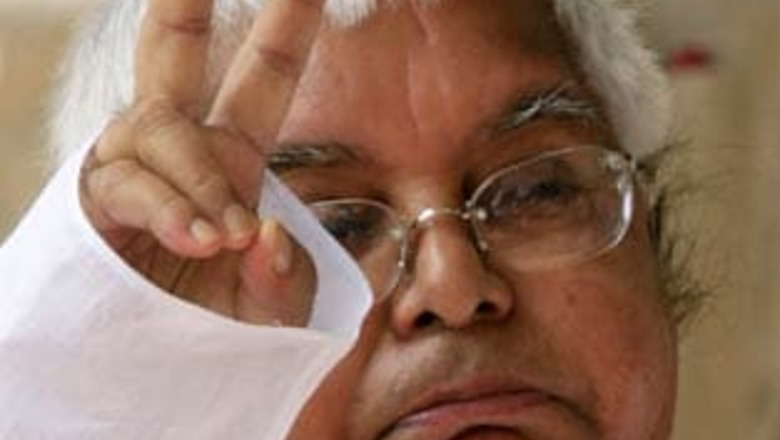
views
New Delhi: The actual position of the state of finances of the Indian Railways does not endorse the claims of turnaround during the five-year tenure of Lalu Prasad as minister, says an official report released on Friday.
The white paper, tabled in parliament by Railway Minister Mamata Banerjee, says changes were made in the accounting procedures during her predecessor's tenure to show some questionable cash surpluses, which were also not stacked away but spent.
Tabled amid furore by some members, along with a "Vision 2020" document on short-to-long-term targets, the white paper also says excessive money was charged for schemes such as "tatkal" even as punctuality took a beating during the period.
"The traffic growth performance has been below par for the entire period," says the report, while dealing with the record of Indian Railways over the past five years ended March 31, 2009.
"There were two accounting changes and these have contributed significantly in inflating the figures of 'cash before surplus dividend' - a new way of portraying surpluses generated, introduced in 2007-08," the report says.
Some other changes in the procedures inflated the figure for cash surplus before dividend by Rs 17,006 crore (some $3.5 billion), even as proper treatment of the Pay Commission report would have reduced the surplus by another Rs 26,206 crore ($5.25 billion), it says.
This apart, but for the introduction of another new concept called "investible surplus", the cash surplus would have been further eroded by Rs.23,584 crore ($4.7 billion), it adds.
Lalu Prasad had claimed a cash surplus of nearly Rs 90,000 crore ($18 billion) during his tenure as Railway Minister, saying he had managed to turn around the same Indian Railways which experts said was heading towards financial disaster.
This feat had earned him praise from both within and outside the country and even became case studies at the Harvard Business School and the Indian Institute of Management at Ahmedabad, among other institutions, where he was also invited to talk.
"Indian Railways, like other railways in the world, and particularly the bigger railways, have been facing the problem of declining market share in comparison with others transportation mode," says the white paper.
"There has been an impression in recent years that significant turnaround in railway finances has taken place during the last five years. Significant part of the increase in freight and passenger earnings was due to the unprecedented growth in the economy," says the white paper.
"As capacity augmentations is a long-gestation exercise, railways adopted the strategy of intensive utilisation of existing assets and resources and improvisation of its operational and maintenance practices."
Considered the third largest railroad network in the world, the Indian Railways ferried nearly 7 billion passengers last fiscal--or over 19 million passengers daily--over 63,273 km on nearly 15,000 trains.
In the separate Vision 2020 document, the Railways has set the target of making more than 30,000 km of its routes into double or multiple lines, compared to 18,000 km today. Some 33,000 km would be electrified.
This focus will be on the Delhi-Kolkata, Delhi-Mumbai, Kolkata-Mumbai and Delhi-Chennai routes, on which dedicated freight corridors would be created, the document says.
Among other main goals are benchmarking the quality of service to the best in the world, zero accidents, utilizing at least 10 percent of energy requirements from renewable sources and a foolproof eco-friendly waste management system.
This apart, the maximum speed of passenger trains would be raised from 110-130 km per hour at present to 160-200 km per hour, and for freight operations from 60-70 km to over 100 km.


















Comments
0 comment